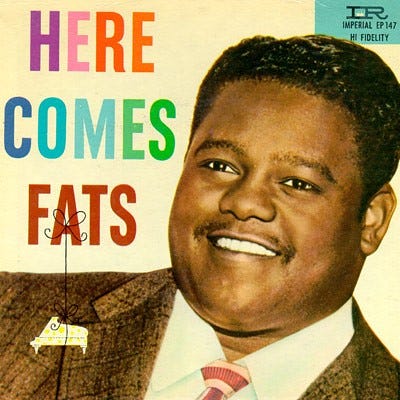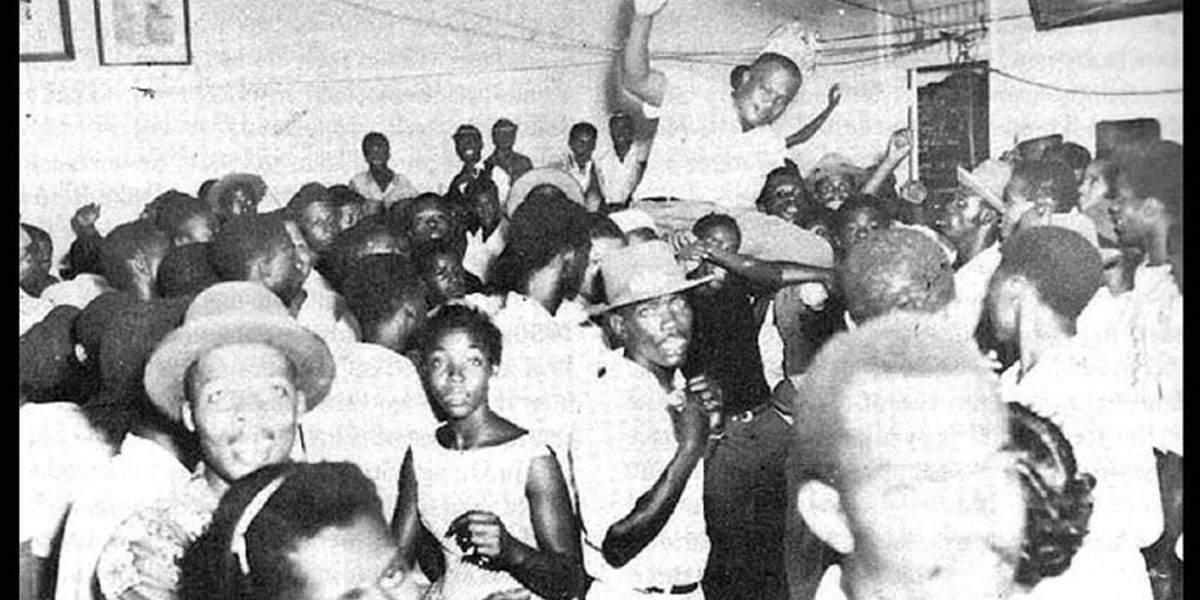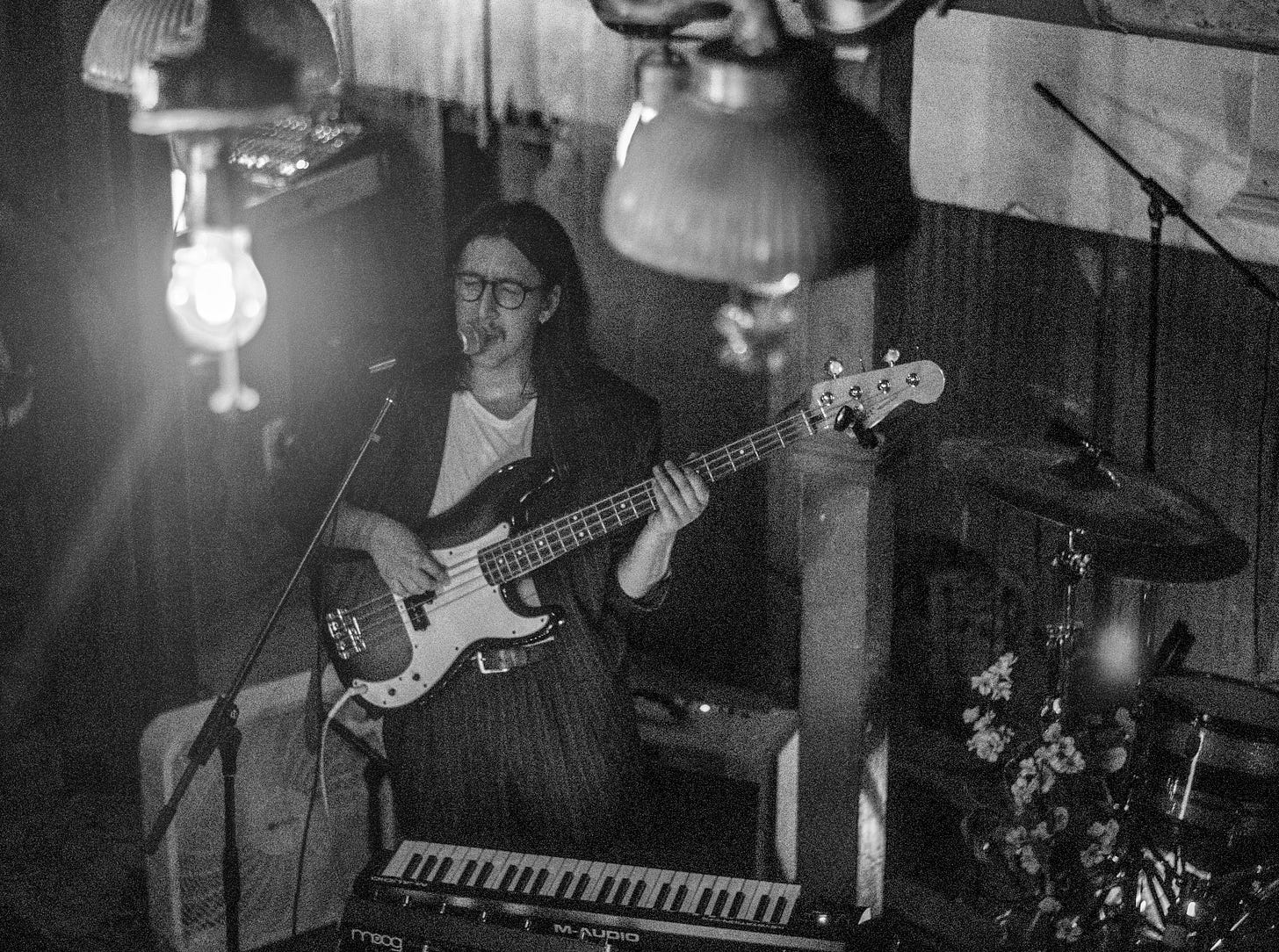Thank you for reading Perfect Sound Whatever. I write updates on the latest music news in New Orleans, feature stories, album reviews, and more. Whether you are from New Orleans or not, my goal is to help you discover new music; provide coverage to local artists, venues, and others creating the music scene in NOLA; and start discussions about music. For questions, comments, or concerns, please feel free to email me at daltonspangler25@gmail.com.
Subscribe for free if you haven’t already. Support me by sharing! I’m also starting a Patreon because I think Substack is way too expensive. Receive benefits like personalized music recs and more for subscribing. More info at the end.
Today in the newsletter: How New Orleans directly inspired the creation of Ska, and some work I had published recently (yay). No updates but I’ll be back with those next week.
How New Orleans inspired the creation of Ska (Chapter 1)
I saw New Orleans Ska bands Bad Operation and Joystick perform and it led me to an interesting fact; New Orleans' music directly inspired the creation of Ska as we know it. The first wave of Ska from the early 1960s sounds more akin to an R&B-Reggae fusion (even though Ska came before the widely known Reggae) than an Operation Ivy or a Less Than Jake. Artists like the Skatalites, Derrick Morgan and several others who were credited with creating the building blocks of any Ska band were inspired by New Orleans R&B musicians like Fats Domino, Smiley Lewis, Jelly Roll Morton, Champion Jack Dupree, Shirley and Lee, and many more.
I will be writing a series of pieces explaining how New Orleans and Ska are linked and what that means for the genre. Today, I will explain the history behind the two cities and how the intersection was set up due to various reasons like slavery, urbanization, technology, and a passion for music.
If Ska has anything close to the ubiquitous origin story of the famous Amen Break in Hip-Hop and Electronic music, Fat Domino's "Be My Guest" would be it. Domino plays a heavy offbeat on the keys throughout the entire track that laid the groundwork for a defining feature of the genre. To explain how this seemingly simple "house party" song became the basis for Ska and even Jamaican music as we know it today, I first have to explain a simplified history of Jamaica and the relationship the nation would come to have with New Orleans.
Jamaica and New Orleans are inextricably tied to slavery and the institutions surrounding it. Both places had large slave populations but were unique in that they both allowed slaves to publicly practice their home countries' musical traditions. For New Orleans, this gave rise to Congo Square outside the French Quarter and the proliferation of several genres of music (Jazz and R&B). For Jamaica, traditional Burru drumming led to genres like Calypso and Mento forming (foundational folk music to the Jamaican sound).
The music of both places resulted from slaveowners forcing slaves to perform music more like European folk but African folk music prevailed in the form of emphasized offbeats in the percussion. In a 4/4 song, each the emphasis is generally used as one and two and three and four. In a song with an emphasized backbeat or offbeat, the emphasis lands on the “and” in-between (One and two and three and four).
By the 1940s, Black music became the dominant and foundational force behind Western pop music. Blues, Jazz, Soul, Swing, Big Band; all were popular genres heavily influenced by black musicians and traditons. African culture's drums and rhythms had completely fused with European Brass and quadrille dance by the point.
The '40s, in particular, was the era of Big Band in the United States and Mento in Jamaica. Both places had gone through significant urbanization and the music of the time reflected it. Music was social, a means to gather and dance in the big city, and a live band was the standard.
Big Bands' popularity spread out of the United States to Jamaica via the radio and because of soldiers stationed on the island during World War II bringing their records with them. People in Jamaica loved the music but had no way of realistically hearing it other than live or recreating it themselves. Records often had to be shipped overseas, costing lots of cash and taking many months, sometimes years, to arrive. This trend spawned a wave of Jamaican Big Band music.
From a promoter's perspective, the problem with big band performances was that a band could only play for so long before they'd have to take a break. And in that time, it would be silent. People who wanted to dance would find other clubs and venues would lose out on customers buying food and drinks.
Enter the sound system (where the Operation Ivy song came from that was recently covered by an unlikely duo with an amazing music video, so check that out). No longer did clubs have to worry about the music stopping because a machine kept the tunes coming without the price tag of a live band.
Mind you, sound systems weren't cheap, especially in Jamaica. There was an upfront cost for the towering subwoofers, turntables, and amplifiers; not to mention the sound system crew. And in Jamaica, most of this equipment had to be imported from the United States. But for the average Jamaican, the sound system was the only way to listen to their favorite big band or R&B music state-side. A San Jose State University report explains the situation well here:
"In the late 1940s and early 1950s, many working-class Jamaicans were too poor to even afford radios. The Jamaican big bands tended to play engagements in hotels, where high prices prevented working-class and lower-income Jamaicans from attending.
Working-class and low-income Jamaicans were starved for entertainment and most of them could not afford the price of a home record playback system, which amounted to approximately a year's wages for the average Jamaican."
Most sound systems were thrown on the back of a flatbed truck and used to host street performances. Ordinary people would pay admission to these "Dance Halls" and often enjoyed food and drink like curry goat, roast fish, and Red Stripe beer. It was how neighbors came together. But the success of the sound system model depends on the records available. And with any money-making business, there are always competitors.
Most records had to come from the US in the '40s and '50s. WWII created a trend of migrant workers coming to work the harvest with Americansfarmers. Jamaican workers would go to the US for harvest and bring back a collection of their favorite records. Records became so valuable during this time that people (even US soldiers) would barter them for common household goods but also for drugs, and even services from sex workers.
Sound System operators, also known as "selecters," competed to have the best collection. They would often hassle record company executives and if they did get their hands on any exclusive records, they would often scratch off the names to protect from dancehall espionage.
Charisma and weirdness helped too. A legendary sound system operator, Duke Reid often performed armed to the teeth wearing a long ermine cloak with a pair of Colt .45 pistols strapped to his waist in cowboy holsters, a cartridge belt across his chest and a loaded shotgun over his shoulder. He often wore gold jewelry, including a crown and knew how to rile a crowd like proto-deejay.
The cultural phenomenon of the Sound System would lead to more and more demand for new music. New Orleans R&B was viral for its relaxed, piano and horn-led melodies and incorporating electric guitar, organ, and electric bass. This newfound demand would inspire a generation of Jamaican musicians to produce and record music leading to the rise of Ska.
Next week, I'll look at how this transition occurred and the musicians that made it happen. Below are some of my sources if you want to check that out:
https://www.atlasobscura.com/articles/ska-the-sound-that-made-worldwide-waves
https://www.caribbeanintelligence.com/content/ci-shorts-fats-dominos-legacy-jamaican-music
https://scholarworks.sjsu.edu/cgi/viewcontent.cgi?article=1052&context=lib_pub
Work by me
Photo of the week:
Album Review: Pell, Floating While Dreaming II
Album Review: The Convenience, Accelerator
Support my work
I started a Patreon because Substack’s minimum subscription cost is $5 a month, which is way more than most people would be willing to spend. There are l personalized benefits and exclusives available. Also, pay what you can by emailing me daltonspangler25@gmail.com and I’ll send you a year’s subscription.
Patreon link: https://www.patreon.com/perfectsoundwhatever
Big thanks to Brett Fountain and family members who have supported me so far!
Let me hear from you!
Send me love, hate, music recommendations, story tips, musicians you want to see interviewed, shows you want to see promoted, etc. by emailing me at daltonspangler25@gmail.com










